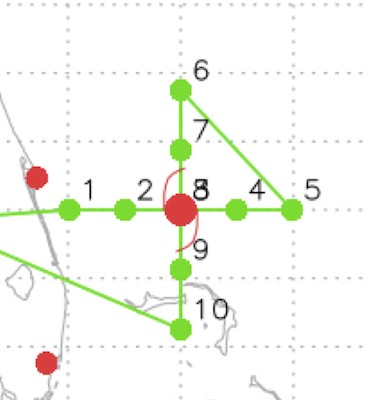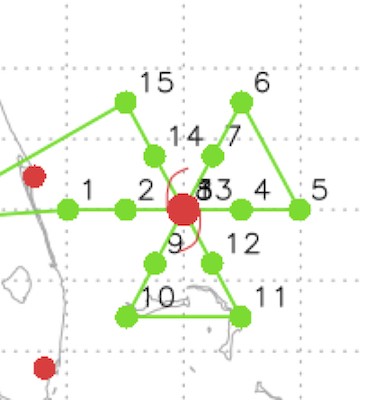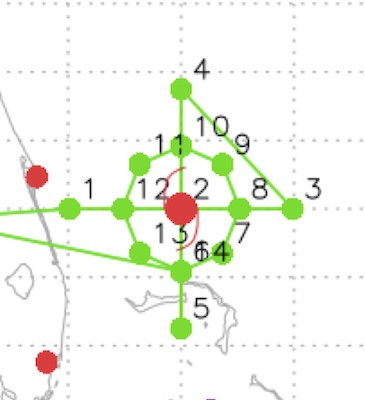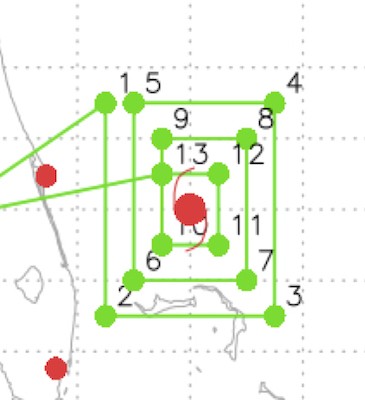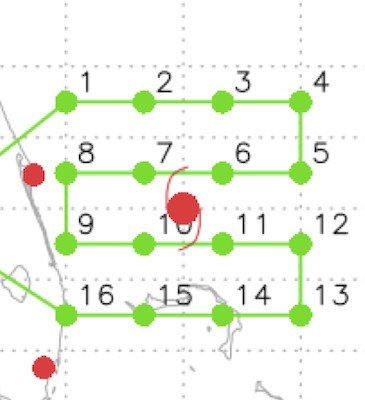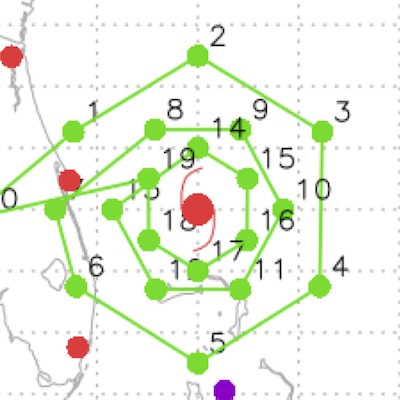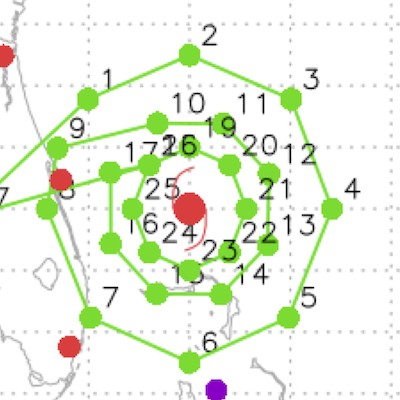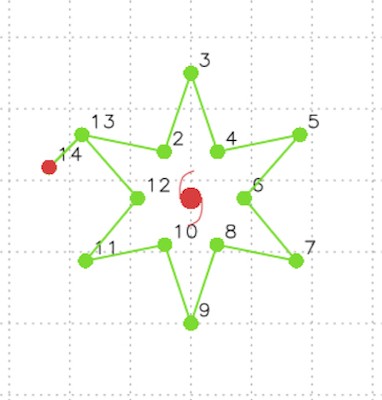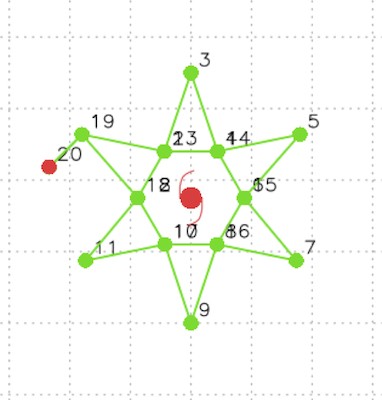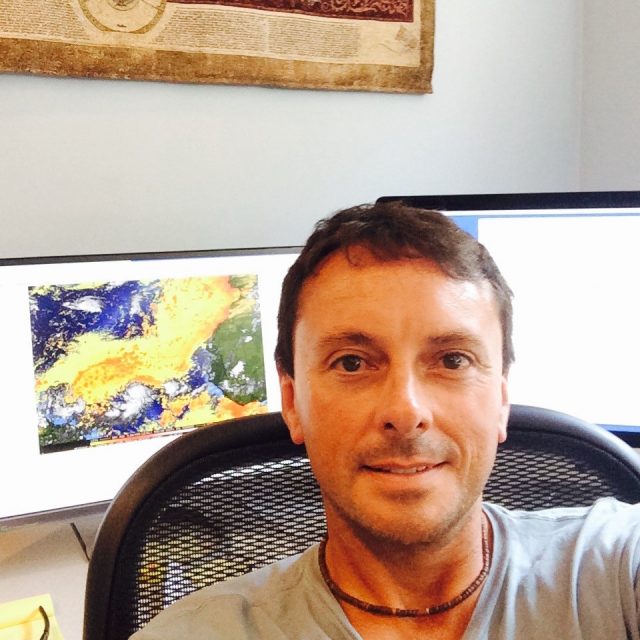Hurricane Field Program
2021 Hurricane Season
Scroll to Learn More
On this page you can find detailed descriptions of the research field activities planned for the current hurricane season. The 2021 Hurricane Field Program supports NOAA’s Advancing the Prediction of Hurricanes Experiment (APHEX). This page is organized by projects that support research of the lifecycle stages of storms, from genesis to end stage, as well as ocean observations and satellite validation.
About APHEX: Developed in partnership with NOAA’s Environmental Modeling Center, National Hurricane Center, Aircraft Operations Center, and AOML’s Physical Oceanography Division, APHEX is intended to improve our understanding and prediction of hurricane track, intensity, structure, and associated hazards by collecting observations that will aid in the improvement of current operational hurricane models, such as the Hurricane Weather Research and Forecasting model, and the development of the next-generation operational hurricane models.
We are building a Weather-Ready Nation.
Supporting NOAA Operations.
With research to operational links within the HFP-IFEX Plan and through satellite validation to enhance operational utilization of satellite data within the HFP-IFEX Plan.
See How the Hurricane Field Program Supports NOAA Operations.
This document outlines the support HRD provides for operationally-tasked (EMC/NHC) NOAA hurricane aircraft missions. In the event of an operationally-tasked mission, HRD will provide support to ensure the mission achieves its goals. Click on the link below to read full documentation.
Genesis Stage
Favorable Air Mass (FAM)
Investigators
Ghassan Alaka, Jon Zawislak, Jason Dunion, Alan Brammer (CSU/CIRA/NOAA), Chris Thorncroft (SUNY Albany)
Science Description
Although the ingredients for tropical cyclone formation have been well-documented for decades, it is still difficult to predict which disturbances will develop and which ones will not. A big factor in this uncertainty is the favorability of the air mass ahead of and surrounding the disturbance. This experiment proposes to collect observations of low- and mid-level moisture and winds to assess the favorability of the air mass, which would fill in gaps in current satellite observations. These aircraft observations may also provide helpful guidance for the expanded use of satellite observations in the absence of aircraft observations.
Full Documentation
Download PDFs:
Precipitation during Formation and Observing its Response across Multiple Scales (PREFORM)
Investigators
Jon Zawislak, Ghassan Alaka, Rob Rogers, Jason Dunion, Paul Reasor, Mark Boothe (Naval Postgraduate School, NPS), Michael Montgomery (NPS), Tim Dunkerton (Northwest Research Associates, NWRA), Blake Rutherford (NWRA)
Science Description
An accurate prediction of hurricane formation requires an improved knowledge of the precipitation (rainfall) organization and the developing storm circulation response, in the context of environmental characteristics, during the formation process. The overall goal of this experiment is to use aircraft observations to investigate how precipitation (rainfall) within a tropical disturbance (such as an African easterly wave) is involved in the development and intensification of an incipient tropical storm circulation by sampling the characteristics of the precipitation, as well as the moisture, relative humidity, and wind structure of the circulation. It also assesses a new model for understanding how tropical storms form; a model that is colloquially referred to as the “marsupial paradigm” in which developing tropical disturbances have a closed re-circulation region that provides a favorable environment to support sustained precipitation around a preferred “sweet spot.”
Full Documentation
Download PDFs:
Early Stage
Analysis of Intensity Change Processes Experiment (AIPEX)
Investigators
Jon Zawislak, Rob Rogers, Jason Dunion, Josh Alland (NCAR), Rosimar Rios- Berrios (NCAR), George Bryan (NCAR), Falko Judt (NCAR), Michael Fischer, Jun Zhang, Paul Reasor, Joe Cione, Trey Alvey, Xiaomin Chen, Ghassan Alaka, Heather Holbach, and Josh Wadler
ONR TCRI Investigator(s): James Doyle (NRL), Dan Stern (NRL), Pete Finnochio (NRL), Sharan Majumdar (Univ. of Miami/RSMAS), David Nolan (Univ. of Miami/RSMAS), Tony Wimmers (Univ. of Wisconsin/CIMSS), Zeljka Fuchs (New Mexico Tech), David Raymond (New Mexico Tech), Brian Tang (SUNY Albany), George Bryan (NCAR), Michael Bell (CSU), and Ralph Foster (Univ. of Washington)
Science Description
Predicting the timing and rate of tropical cyclone (TC) strengthening events remains one of the most challenging aspects of hurricane forecasting. In their early stages, the structure of developing storms is often disorganized such that their circulations are tilted in the vertical, have prominent dry air masses that can be transported into the inner circulation, and lack rainfall coverage all around the center. These are all conditions that would otherwise be considered unfavorable for further strengthening and are often a consequence of the storm experiencing unfavorable winds in its environment. Storms with these characteristics can, however, strengthen and the goal of this experiment is to understand the physical processes and structures that govern whether storms will intensify in this type of environment.
Full Documentation
Download PDFs:
Convective Burst Structure and Evolution Module (CBM)
Investigators
Rob Rogers (PI), Jon Zawislak, Trey Alvey, Josh Wadler, Robert Black, Josh Wadler, Hua Leighton, Xuejin Zhang, Michael Bell (CSU), Anthony Didlake (PSU), Jim Doyle (NRL), Dan Stern (NRL), Ralph Foster (UW)
Science Description
This module samples the vertical motion and reflectivity structure of strong thunderstorm complexes at a high frequency, e.g., every 15-20 minutes, over a 1-2 h period to observe how the structure of these systems change over time and as they move around the TC center, along with observing how those changes affect the structure and intensity of TCs.
Full Documentation
Download PDFs:
Hurricane Boundary Layer
Investigators
Jun Zhang (PI), Jason Dunion, Sue Chen (NRL), James Doyle (NRL), Daniel Stern (NRL), Joseph Cione, Joshua Wadler, Elizabeth Sanabia (USNA), Xiaomin Chen, Andrew Hazelton, Robert Rogers, Jonathan Zawislak, Brian Tang (U. Albany), Robert Fovell (U. Albany), Rosimar Rios-Berrios (NCAR), George Bryan (NCAR), Falko Judt (NCAR), Michael Bell (CSU), Zhien Wang (CU), Ralph Foster (UW), Yi Jin (NRL), Johna Rudzin (NRL)
Science Description
The atmospheric boundary layer is a crucial region of a tropical cyclone (TC), because it is the area of the storm in direct contact with the ocean moisture and heat sources which power the storm. This module aims to collect observational data to improve our understanding of physical processes in the BL that control the TC intensity change. These data can be used to evaluate and improve the performance of TC forecast models.
Full Documentation
Download PDFs:
Impact of Targeted Observations on Forecasts (ITOFS)
Investigators
Jason Dunion (Co-PI), Sim Aberson (Co-PI), Jon Zawislak, Kelly Ryan, Jason Sippel, Ryan Torn (Univ at Albany-SUNY), Jim Doyle (NRL-Monterey), Eric Blake (NWS/NHC), Mike Brennan (NWS/NHC), Chris Landsea (NWS/TAFB)
Science Description
This experiment will use advanced guidance from multiple sets of forecast models to determine locations where aircraft observations could potentially improve forecasts of tropical cyclone track, intensity and structure.
Full Documentation
Download PDFs:
Stratiform Spiral Module (SSM)
Investigators
Rob Rogers (PI), Jon Zawislak, Trey Alvey, Robert Black, Josh Wadler, Hua Leighton, Xuejin Zhang, Michael Bell (CSU), Anthony Didlake (PSU), Jim Doyle (NRL), Dan Stern (NRL)
Science Description
This module samples the distribution of cloud and rain droplets and ice and snow particles and how those distributions vary with altitude across the freezing level in broad regions of relatively weak precipitation and upward motion.
Full Documentation
Download PDFs:
Mature Stage
Eye-Eyewall Mixing
Investigators
Sim Aberson
Science Description
Small features in the eyewalls of very intense tropical cyclones have been hypothesized to increase the amount of energy available for hurricane intensification, or to be responsible for damaging surface wind at landfall or intense turbulence features impacting flight operations. However, the structures of these features, especially the temperature and humidity structures, have never been documented.
Full Documentation
Download PDFs:
Gravity Wave
Investigators
Jun Zhang (PI) and David Nolan (co-PI)
Science Description
Hurricane convection produces gravity waves that propagate both upward and outward. The observational data collected from this module will be analyzed to quantify the characteristics of the gravity waves in early-stage hurricanes and their relationship with storm intensity and intensity change. These data would also provide valuable information for model evaluation and physics improvement.
Full Documentation
Download PDFs:
NESDIS Ocean Winds
Investigators
Paul Chang (PI, NOAA/NESDIS/STAR), Zorana Jelenak (NOAA/NESDIS/STAR), Joe Sapp (NOAA/NESDIS/STAR)
Science Description
To improve our understanding of microwave retrievals of the ocean surface and atmospheric wind fields, and to evaluate new remote sensing techniques/technologies. To help validate satellite-based sensors of the ocean surface in extreme conditions and reduce risk for future satellite missions.
Full Documentation
Download PDFs:
Rainband Complex Module (RCM)
Investigators
Rob Rogers (PI), Michael Fischer, Anthony Didlake (PSU), Michael Bell (CSU), Anthony Wimmers (UWisc), Jim Doyle (NRL), Dan Stern (NRL)
Science Description
This module will sample the structure of long, spiral bands of rainfall (rainbands) that often extend outward from the eyewall of strong hurricanes out to very large distances from the center. These rainbands, often containing mixtures of strong thunderstorms and lighter rainfall that can cover huge areas, are thought to affect the structure and intensity of the hurricane within which they are embedded. The data from this module will seek to explore these structures and their potential relationship with hurricane structure and evolution.
Full Documentation
Download PDFs:
Research In Coordination with Operations Small Uncrewed Air Vehicle Experiment (RICO SUAVE)
Investigators
Joseph Cione, Jun Zhang, George Bryan (NCAR), Ron Dobosy (NOAA/ARLret), Altug Aksoy, Frank Marks, Kelly Ryan, Brittany Dahl, Josh Wadler, Xiaomin Chen, Josh Alland (NCAR), Rosimar Rios-Berrios (NCAR), Gijs deBoer (NOAA/PSL), Evan Kalina (NOAA/DTC), Don Lenschow (NCAR), Chris Rozoff (NCAR), Eric Hendricks (NCAR), Falko Judt (NCAR), Jonathan Vigh (NCAR)
Science Description
This experiment uses small drones, instead of crewed aircraft, to sample the lowest and most dangerous regions of the tropical cyclone. It is believed that observations from these unique platforms will improve basic understanding and enhance forecaster situational awareness. Detailed analyses of data collected from these small drones also have the potential to improve the physics of computer models that predict changes in storm intensity.
Full Documentation
Download PDFs:
Surface Wind and Wave Validation
Investigators
Heather Holbach, Ivan PopStefanija (ProSensing Inc.), Tony Wimmers (UWSSEC), Jim Doyle (NRL), Sue Chen (NRL), James Cummings (NRL), and Ralph Foster (UWAPL)
Science Description
This module will collect data in mature hurricanes to continue improving surface wind speed and rain rate estimates from the Stepped-Frequency Microwave Radiometer (SFMR) and aid the development of surface wind products from synthetic aperture radar (SAR) satellites. It will also verify surface wave observations and identify the extent of 8 ft significant wave height waves. Improved measurements from the SFMR and knowledge of the surface wave field have numerous implications for forecasting and research efforts, such as providing more accurate observations to estimate tropical cyclone (TC) intensity and size along with improved estimates of marine hazards and comparisons for satellite observations. These improvements allow for better watches and warnings for a TC’s potential impacts to be provided to emergency managers and the general public and leads to more accurate research results.
Full Documentation
Download PDFs:
Tropical Cyclone Diurnal Cycle
Investigators
Jason Dunion (Co-PI), Morgan O’Neill, (Co-PI, Stanford Univ.), Daniel Chavas (Purdue Univ.), and Allison Wing (Florida State University), Dave Raymond (New Mexico Tech), Zeljka Fuchs-Stone (New Mexico Tech)
Science Description
This experiment aims to collect observations that improve the understanding of how day-night fluctuations in radiation affect the intensity and structure of hurricanes. One component of these oscillations is a phenomenon called the tropical cyclone diurnal cycle where the cloud fields of storms are seen to expand and contract each day. These daily expansions are associated with a pulse of thunderstorms and rain that travel hundreds of kilometers away from the storm center and will be observed using aircraft observations.
Full Documentation
Download PDFs:
End Stage
Tropical Cyclones at Landfall
Investigators
John Kaplan, Peter Dodge, Ghassan Alaka, Heather Holbach, Jun Zhang, Frank Marks, Michael Biggerstaff (University of Oklahoma), John Schroeder (Texas Tech University), Forrest Masters (University of Florida), Kevin Knupp (University of Alabama at Huntsville), David Nolan (University of Miami)
Science Description
Landfalling tropical cyclones (TCs) can produce a variety of high impact over land weather including tornadoes and damaging winds (particularly gusts) for which there exists limited objective forecast guidance. Thus, our experiment seeks to utilize P-3 aircraft and land-based mobile research team instruments to collect data in landfalling TCs to improve both our understanding and capability to predict such dangerous phenomena that are often associated with these landfalling systems.
Full Documentation
Download PDFs:
Ocean Observing
Ocean Survey
Investigators
Jun Zhang (PI), Joseph Cione, Nick Shay (RSMAS), Benjamin Jaimes (RSMAS), Joshua Wadler, Sue Chen (NRL), James Doyle (NRL), James Cummings (NRL), Johna Rudzin (NRL), Yi Jin (NRL), Elizabeth Sanabia (USNA), Luca Centurioni (SIO), Theresa Paluszkiewicz, (OOC, LLC), Steven Jayne (WHOI), Rick Lumpkin, Gustavo Goni, Gregory Foltz, Francis Bringas, Matthieu Le Hénaff, and Lew Gramer
Science Description
Physical representation of how the atmosphere and ocean interact in tropical cyclone (TC) forecast models has not been evaluated in great detail. Near simultaneous measurements of the ocean and the atmosphere just above the ocean surface, the energy exchanges that occur between them, and how they change over time will provide a unique opportunity to evaluate how well models represent these lowest regions of storms. The observations that are collected should help improve how forecast models represent interactions between the ocean and atmosphere in hurricanes.
Full Documentation
Download PDFs:
Sustained and Targeted Ocean Observations
Investigators
Cheyenne Stienbarger (NOAA GOMO), Emily A. Smith (NOAA GOMO), Gustavo Goni (NOAA AOML), Scott Glenn (Rutgers University), Travis Miles (Rutgers University), Frank Marks (NOAA AOML), Jun Zhang (NOAA AOML), Joe Cione (NOAA AOML), Luca Centurioni (Scripps Institute of Oceanography), Rick Lumpkin (NOAA AOML), Terri Paluszkiewicz (Global Drifter Program), Sidney Thurston (NOAA GOMO), Andy Chiodi (NOAA PMEL), Chidong Zhang (NOAA PMEL), Dongxiao Zhang (NOAA PMEL), Chris Meinig (NOAA PMEL), Greg Foltz (NOAA AOML), Steve Jayne (WHOI), Joaquin Trinanes (NOAA AOML and NESDIS CoastWatch), Hyun-Sook Kim (NOAA AOML), Juilio Morell (CARICOOS), Patricia Chardon (UPRM), Robert Todd (WHOI), Patricia Chardon (UPRM), Catherine Edwards (SECORA), Andrew Chiodi (NOAA PMEL), Dawn Petraitis (NOAA NDBC), Avichal Mehra (NOAA EMC), Kathleen Bailey (NOAA IOOS), Kerri Whilden (TAMU), Kevin Martin (USM), Francis Bringas (NOAA AOML), Ulises Rivero (NOAA AOML), Grant Rawson (NOAA AOML), CAPT Elizabeth Sanabia, (NRL)
Science Description
The goal of this module is to provide ocean observations to improve how the ocean component is represented in hurricane forecast models. Ocean observations will be provided in sustained mode, when they are focused on the sustained monitoring of specific ocean water mass properties or features (e.g., ocean currents, gyres, global ocean heat content) and in targeted mode, when they are dedicated to assessing features known to be linked to hurricane intensity changes.
Full Documentation
Download PDFs:
Satellite Validation
ADM-Aeolus
Investigators
Lisa Bucci (Co-PI), Jason Dunion (Co-PI), Lidia Cucurull (Co-PI), Mike Hardesty (Co-PI, Univ. of Colorado – NOAA/CIRES), Ralph Foster (Univ. of Washington)
Science Description
This experiment seeks to use aircraft observations to validate satellite measurements of winds in the environment of tropical cyclones. This will be accomplished by coordinating NOAA’s P-3s and G-IV high altitude jet with overpasses of the ADM-Aeolus satellite.
Full Documentation
Download PDFs:
NESDIS JPSS
Investigators
Jason Dunion (Co-PI), Jon Zawislak (Co-PI), Rebekah Esmaili (Co-PI, STC), Chris Barnet (Co-PI, NESDIS/JPSS-NASA), Michael Folmer (Co-PI, NWS/OPC), Nadia Smith (Co-PI, STC), Tony Wimmers (UW/CIMSS)
Science Description
This experiment seeks to use aircraft observations to validate satellite measurements of temperature and moisture in a variety of environments that can affect tropical cyclone intensity and structure. This will be accomplished by coordinating NOAA’s GIV jet to fly below the NOAA-20 and Suomi-NPP satellites when they are passing overhead.
Full Documentation
Download PDFs:
NASA TROPICS Pathfinder
Investigators
Brittany Dahl (co-PI), Jason Dunion (co-PI), Rob Rogers (co-PI), Jon Zawislak (co-PI), Kelly Ryan, William Blackwell (MIT, Lincoln Laboratory)
Science Description
This experiment is designed to calibrate and validate temperature, moisture, and precipitation measurements obtained from the new TROPICS Pathfinder satellite. These profiles will be compared to NOAA P-3 and NOAA G-IV aircraft observations, whose flight patterns will be coordinated in space and time with overpasses from the satellite.
Full Documentation
Download PDFs:
Operational Flight Maps
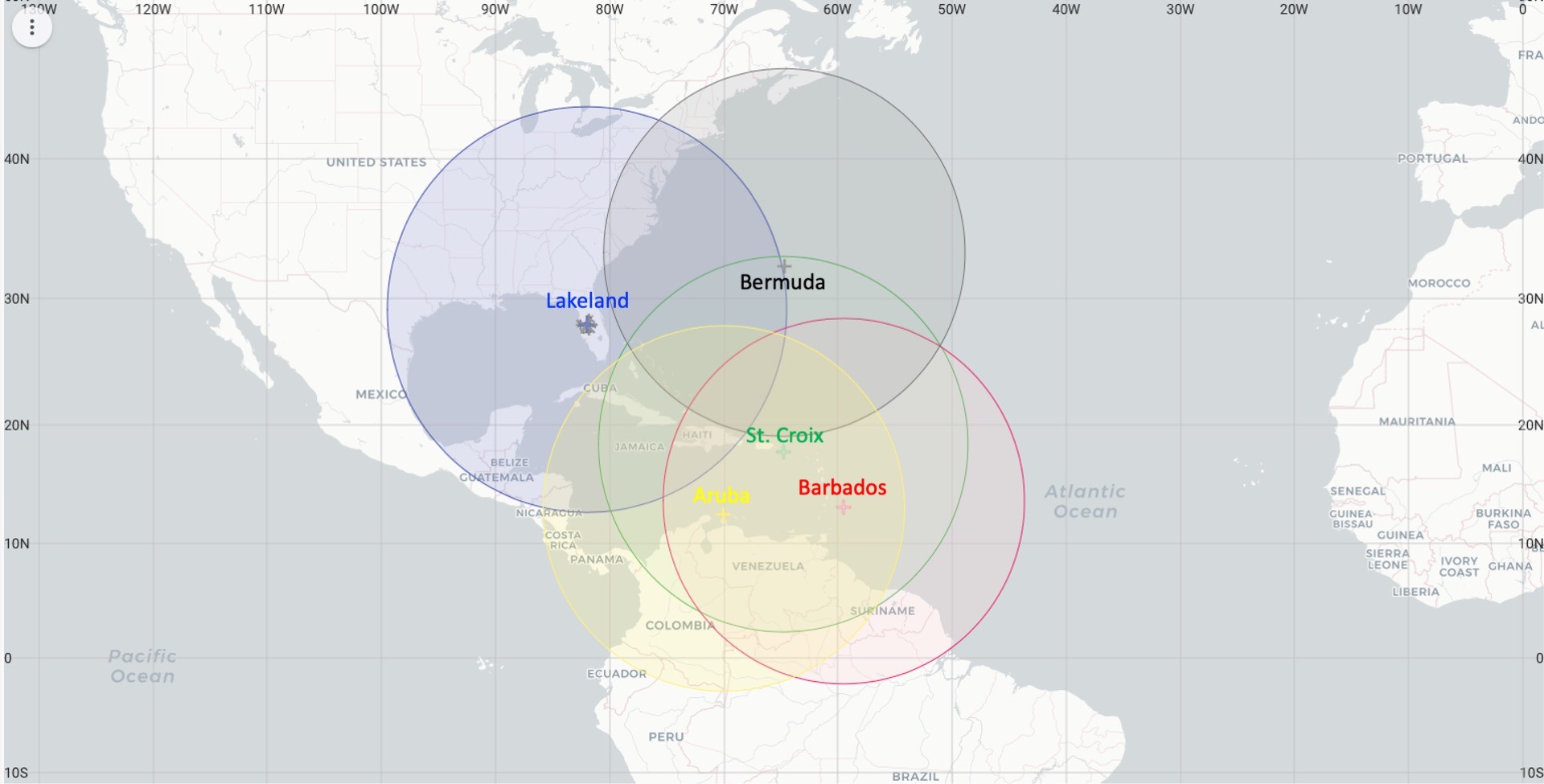
The P-3 Aircraft Operational Flight Map
Primary Atlantic operating bases and ranges (assuming ~2-h on-station time) for the P-3.
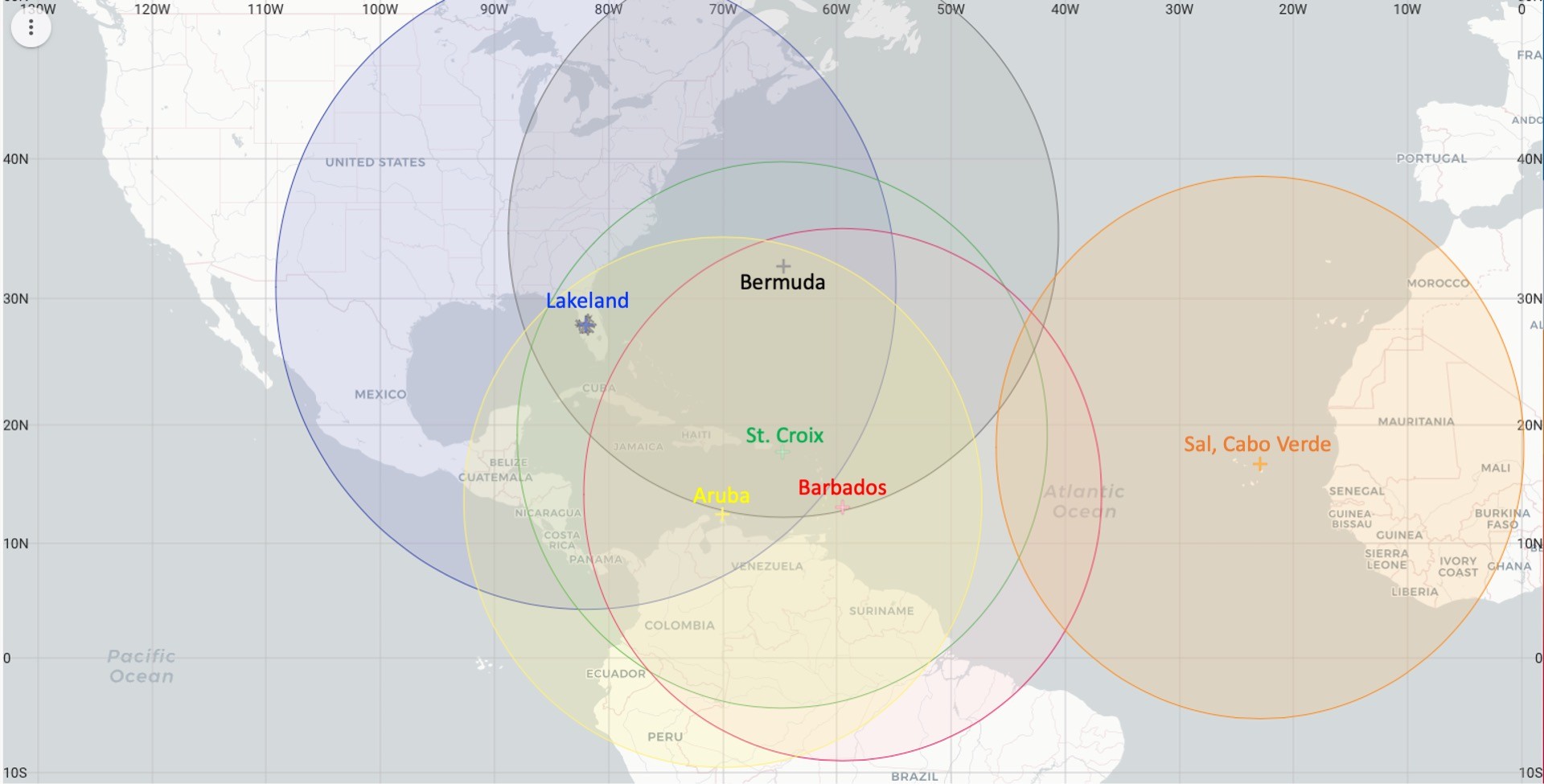
The G-IV Aircraft Operational Flight Map
Primary Atlantic operating bases and ranges (assuming ~2-h on-station time) for the G-IV.
Flight Patterns
Rotated Figure 4: P-3 & G-IV
- In-Pattern Duration:~ 5 h (P-3), ~ 2 h 55 min (G-IV)
- Leg Lengths: 105 n mi (195 km)
- Dropsondes: centers, mid-points and turn points of each leg [20 sondes total]
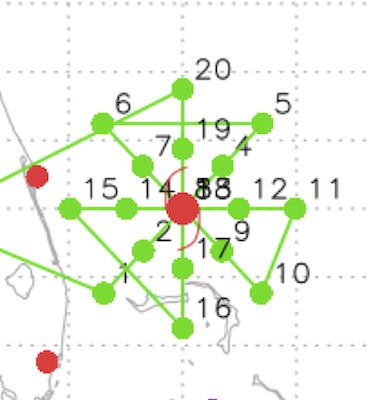
Appendices
Aircraft Information
